
Turning Data Into Action: Transforming Airport Queues With Smart Spaces
Airports are no longer just places of transit — they’re transforming into dynamic ecosystems. With soaring demand for air travel, the challenge lies in reimagining static space — changing how passengers flow in real time to prevent overcrowding, minimize delays, ensure safety, and free up time for shopping and dining (and boosting concessionaire revenue).
And nowhere is this more apparent than at airport security and ticketing checkpoints.
Lavi’s new Smart Guidance technology is at the forefront of this evolution, replacing what had traditionally been rigid infrastructure with flexible environments that optimize space and mitigate the need for expensive structural buildouts. This innovative approach harnesses technology and data to enhance operational efficiency, reduce security risks, and free staff from crowd management.
For travelers, the result is faster, more streamlined journeys that drive satisfaction and discretionary spending. Modern air travel experiences begin on the ground, where technology and data in queue management have the power to elevate and optimize.
A New Era in Navigating Crowded Terminals
If you've ever felt like airports are perpetually packed to capacity, with lines snaking through terminals like never-ending rivers, you're not imagining it: air travel is growing faster than ever.

- In 2000, the world saw about 1.7 billion passengers travel by air.
- By 2019, that number had more than doubled to over 4.5 billion.
And the real kicker?
- By 2037, 8.2 billion global passengers are expected to fly annually.
Airports are facing a perfect storm as rapidly growing demand converges with challenges like:
- Staffing shortages: Nearly 45% of airport operators are struggling to hire sufficient staff. The workforce is only growing by 1-2% each year, while air travel demand is up 5-6%.
- Capacity constraints: Many major airports are operating at or above 90% of their intended capacity. The Airports Council International (ACI) forecasts that airports must make $2.4 trillion in capital improvements by 2040 to keep pace with demand.
- Decreased operational efficiency: With just a 6% operating margin, airports need to move passengers through security quickly so they can enjoy shopping and dining while they wait. Direct spending accounts for 59% to 88% of overall airport profits.

By designing and installing smart spaces with automated queuing systems, Lavi helps optimize passenger flow, maximize existing space, and make airport staff more productive.
What Are Smart Spaces?
“Smart spaces” refer to environments that integrate technology and automation, seamlessly melding the physical and digital worlds. Using interconnected devices, sensors, and data analytics, smart spaces dynamically adapt to needs and objectives. They’re changing how people flow through systems, shop, receive information, and much more. While highly visible in airports across the world, they’re also being used in other innovative ways, including:
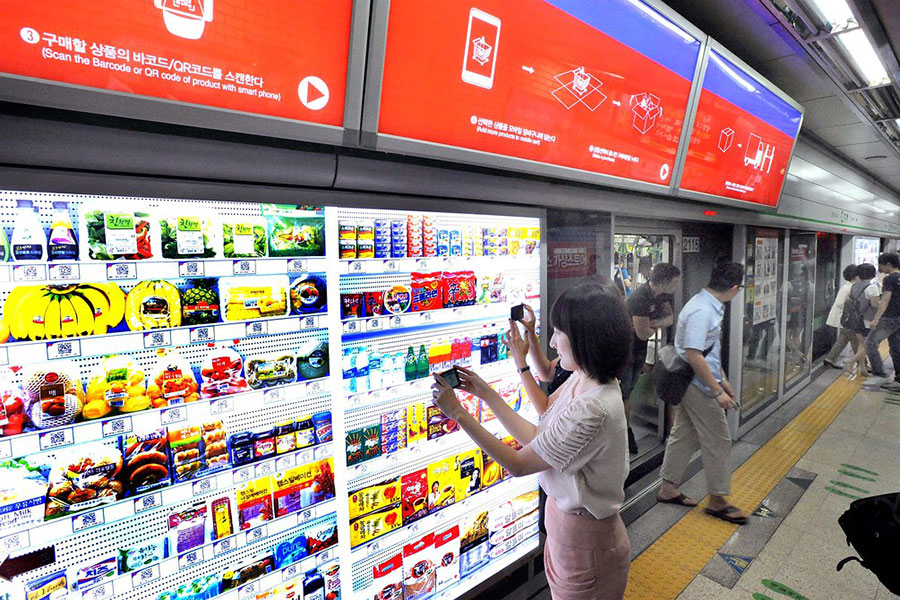
- Tesco’s virtual grocery store: In Seoul, Korea, Tesco transformed subway stations into virtual grocery stores with life-sized murals of grocery items. Commuters shop by scanning QR codes and have their purchases delivered directly to their homes. By using technology to turn a flat wall into a dynamic store, Tesco realized a 130% boost in online sales.

- Marriott’s virtual concierge: With a virtual concierge system in over 500 hotels, guests scan QR codes on lobby signs with their phones to access AI-powered recommendations for attractions, maps, and dining — eliminating the need for printed materials or front-desk service. The system optimizes valuable space and provides instant information that make stays more efficient and delightful.
Anatomy of an Airport Smart Space
In airports, smart spaces are tech-enhanced environments designed to manage crowds, reduce wait times, and streamline processes at security and ticketing checkpoints, creating efficiency for both passengers and airport staff.
Lavi smart spaces in airports are built around four core components:
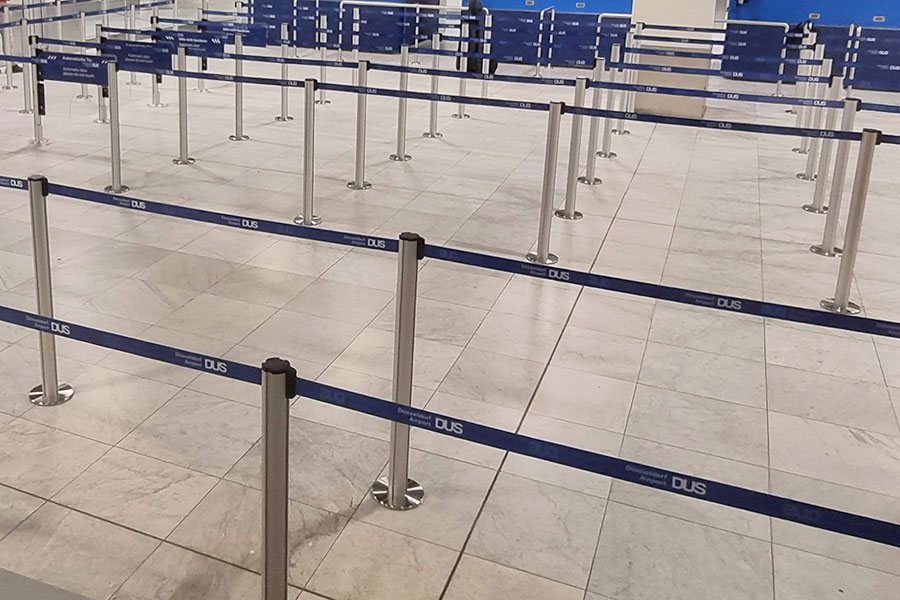
1. Magnetic Stanchion Grid Layout
A predictable queue layout is essential for tracking metrics accurately. Therefore, every smart queue installation includes a modular grid layout using Magnetic Stanchions, designed to withstand heavy foot traffic. The stanchion grid remains stable, while enabling flexible lane configurations. The structured, organized look of the space resonates with travelers, making their journey more efficient and enjoyable, adding to the overall appeal.
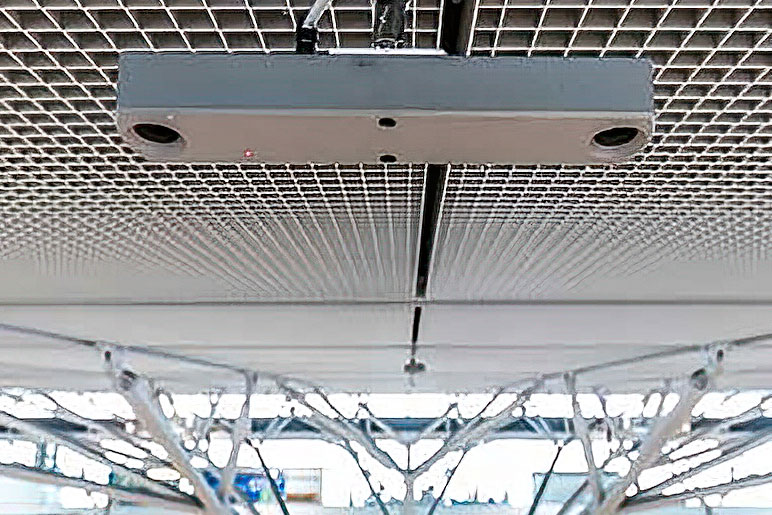
2. Passenger Monitoring Sensor System
Using real-time data from traffic and service monitoring sensors strategically placed throughout the airport, this system effectively tracks crowd levels in various areas. Real-time data monitoring feeds the traffic flow metrics to automate the Smart Guidance system.
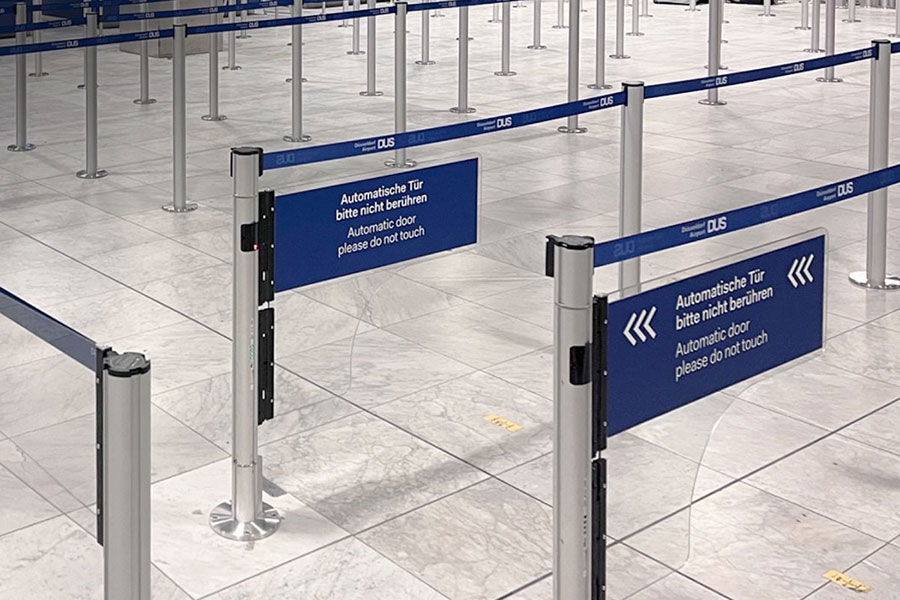
3. Smart Gates
Based on system data, automated smart gates, placed at strategic positions throughout the queue, open or close to guide people through optimized paths, expanding queues, directing flow, controlling access, and balancing service loads.
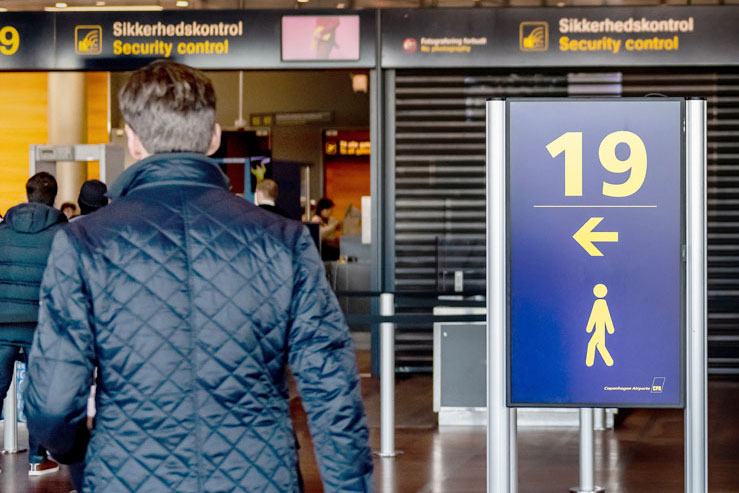
4. Electronic Queuing / Digital Signage
Electronic queuing systems with integrated digital signage make directing passengers easy, even before they enter a queue. Placed near the queue approach, Smart Guidance digital signage directs passengers to less crowded areas, optimizing efficiency across stations. At the head of the queue, the system manages service load by creating instant awareness of open service positions and optimizing pre-fill lanes for faster throughput and shorter wait times.
The Benefits and ROI of Smart Guidance Technology
Smart Guidance technology offers a host of advantages for passengers, airport operators, and concessionaires:
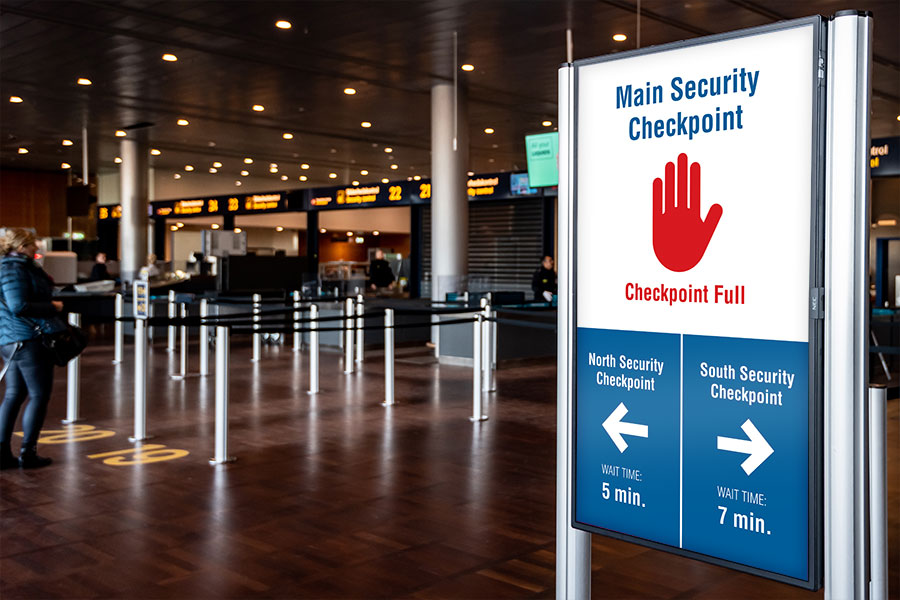
- Enhanced Passenger Experience: Smart guidance systems reduce congestion and wait times, helping travelers move quickly through queues so that they have more time to shop, dine, or relax.
- Increased Operational Efficiency: Real-time data optimizes lane management, reroutes passengers, allocates staff depending on traffic demands, and eliminates the need for manual interventions.
- Improved Safety and Security: By monitoring occupancy levels and preventing overcrowding, the system supports TSA and fire marshal compliance and enhances safety by facilitating emergency exits.
- Visual Appeal: The clean grid pattern, modern stanchion design, and custom quality signage enhance aesthetics.
- Effective Resource Management: Smart guidance optimizes existing footprints and reduces the need for costly buildouts, while streamlined passenger flow requires fewer staff members.
- Revenue Growth Opportunities: Shorter wait times leaves more time to enjoy shopping and dining. According to a 2023 J.D. Power study, “delighted” passengers spend an average of $44, while dissatisfied ones spend only $29.
- Adaptability and Future-Proofing: Smart guidance systems easily integrate with evolving technologies like biometric verification and automated boarding systems, and help airports readily adapt to new TSA and ADA requirements.
How Smart Guidance Transforms Operations and Boosts ROI
From our first installation in 2016, Smart Guidance systems continue to deliver:
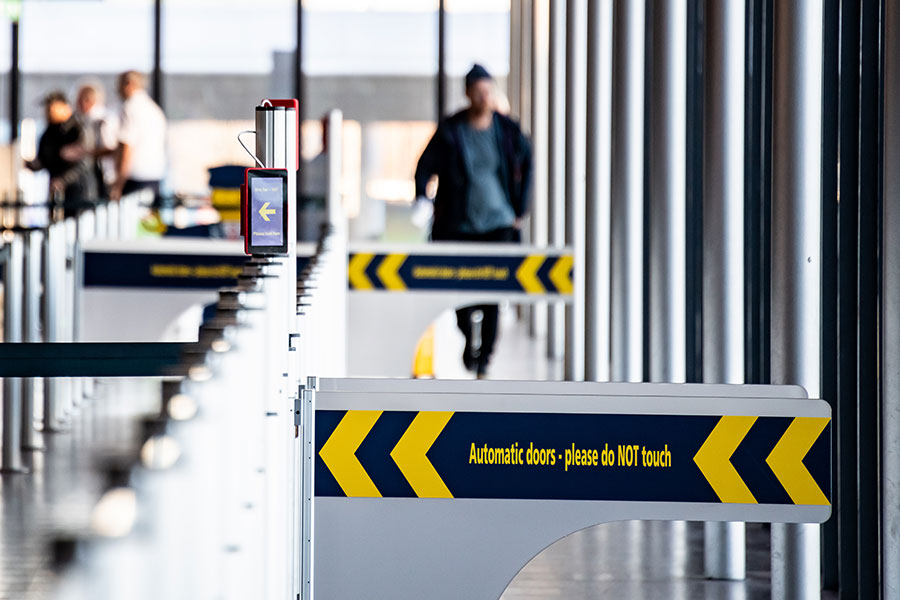
- Improved service load balancing: A Northern European hub optimized central security and achieved full ROI within 18 months by implementing 12 Smart Gates and Electronic Queuing.
- Eliminated bottlenecks during peak times: A Central European airport reduced delays and enhanced efficiency during peak travel periods through the use of six Smart Gates, reaching ROI in just 12 months while.
- Optimized staffing efficiency: An International Western European airport that implemented 19 Smart Gates with the goal of processing 99% of passengers in under 10 minutes, saw an immediate reduction in delays with early date suggesting record-setting passenger satisfaction.
Looking to future-proof your airport to handle crowds? Lavi can help.
Investing in smart airport queuing solutions today creates efficient, secure, and welcoming environments that meet all stakeholder expectations for now and into the future.
Contact us to see how you can transform your operations and improve passenger experiences with Lavi’s Smart Guidance technology.
SUBSCRIBE
Subscribe to stay up-to-date with new products, resources information and news.
RECENT RESOURCES
Rapid Deployment Crowd Control: JetTrac Portable Barriers For The Biggest Spaces
View4 Psychological Reasons Your Customers Hate Waiting In Line
ViewFrom Bleachers To Bookstores: 4 Campus Crowd Control Solutions
ViewCrowd Control Systems for Large Venues
View









